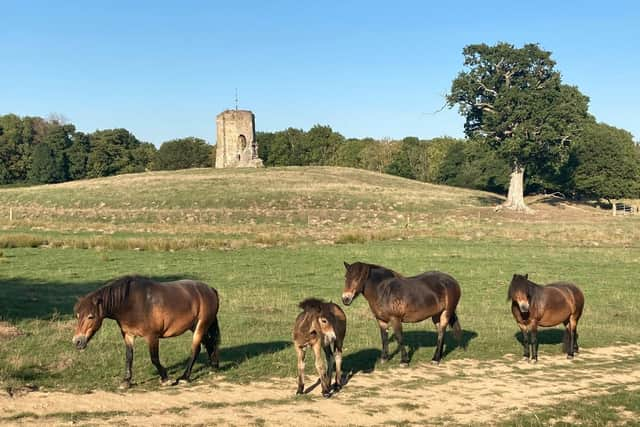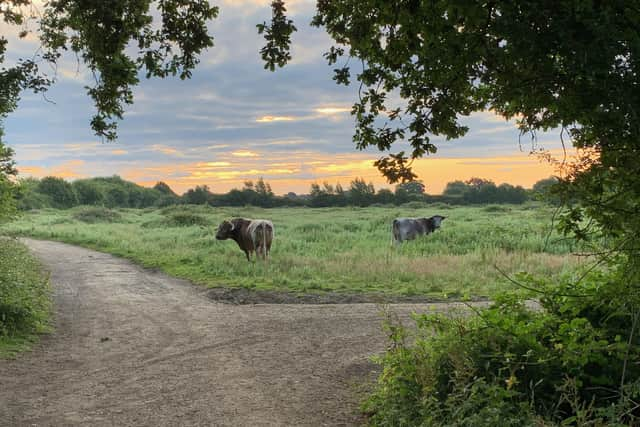Major re-wilding site near Horsham monitored from space for first time
and live on Freeview channel 276
Scientists at the Zoological Society London used long-term satellite data to monitor and evaluate the impacts of more than 20 years of nature restoration efforts at the Knepp Estate in West Grinstead – one of England’s longest running rewilding sites.
The Institute of Zoology, Imperial College London and the University of Sussex gathered satellite data and imagery such as those available from Google Earth to track changes in trees and shrubs from 2001 to 2020 across the 1,400-hectare Knepp Estate.
Advertisement
Hide AdAdvertisement
Hide AdAnd after scouring years of earth observation images across seasons, the team pieced together a picture of definitive nature recovery at the site, with results showing that rewilding efforts have led to a 40 per cent increase in areas with trees, and six times more shrubs than before the project started.


Following World War II, the Knepp Estate was used for intensive agriculture, but after this was deemed unprofitable, the owners turned it into a conservation site with selected areas open to the public.
Since then the estate - home to Isabella Tree and Charlie Burrell - has hosted a diversity of returning wild species including rare turtle doves, nightingales, peregrine falcons and purple emperor butterflies.
Rewilding - the process of rebuilding a functioning and self-sustaining ecosystem by restoring natural processes and food webs - is increasingly seen as an important tool to help repair damage to natural systems - the foundations of all life on earth.
Advertisement
Hide AdAdvertisement
Hide AdSatellite data showed that nature has bounced back particularly well in the south side of the Knepp Estate where fields were left for long periods before the introduction of herbivore species such as Exmoor ponies and fallow deer.


This area showed the most significant change in land cover between 2001 and 2020, with the area dramatically switching from brown ploughed fields and grassland to shrubs, woody vegetation and trees.
Conservationists who led the study say that these changes would have reinvigorated support for important ecosystem functions including food sources, habitats, water and soil retention.
Zoological Society London researcher Henrike Schulte to Bühne said: “This study is the first of its kind to assess the impacts of rewilding on wider ecosystem functions over several decades and at scale, in the UK.
Advertisement
Hide AdAdvertisement
Hide Ad“The Knepp Estate is becoming a lush and thriving natural habitat and by using freely available satellite data, we have deepened our understanding of the impacts made by rewilding efforts.”
He added: “Earth observation tools have been vital in helping us to understand more about rewilding and how it’s working. We hope that our work has proven how successful it is, and will be used to assess the impact of other rewilding projects in the future.”
The findings also showed a significant increase in green vegetation, which the researchers believe is not entirely explained by rewilding efforts alone.
They suggest they could also be attributed to the impacts of warming conditions in the south of England due to climate change.
Have you read? Hundreds expected to take part in Horsham’s Riverside Walk